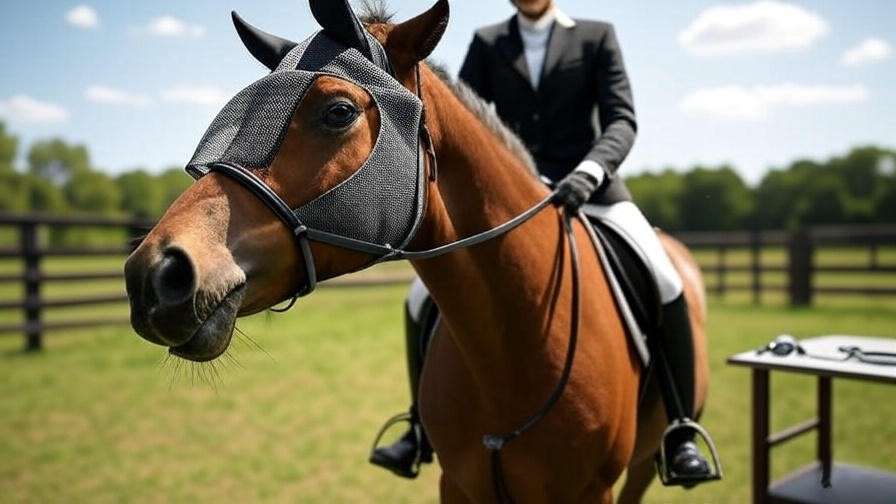Picture this: you’re riding through a sunlit pasture, the rhythm of your horse’s gait steady beneath you, when suddenly, they start to shake their head up and down. It’s a behavior that catches your eye, sparking curiosity and perhaps a touch of concern. Why do horses shake their heads up and down? For equestrian enthusiasts, understanding this common equine behavior is more than a matter of curiosity—it’s a key to ensuring your horse’s health, comfort, and happiness. Whether you’re a seasoned rider or a new horse owner, decoding this habit can strengthen your bond with your equine partner and enhance their well-being.
In this comprehensive guide, we’ll explore the reasons behind head shaking, from natural instincts to potential health issues, drawing on insights from equine veterinarians, behaviorists, and years of hands-on experience in the field. Expect practical solutions, expert-backed advice, and actionable tips to address this behavior, ensuring your horse thrives. Let’s dive into the fascinating world of equine communication and care to uncover what your horse is trying to tell you.
Understanding Head Shaking in Horses
What Is Head Shaking?
Head shaking in horses refers to the repetitive up-and-down or side-to-side movement of the head, often noticeable during riding, grooming, or while at rest in the pasture. This behavior can range from a quick, casual toss to persistent, vigorous shaking that signals discomfort or distress. For horse owners and riders, recognizing the difference between normal and problematic head shaking is crucial. Occasional head tosses may simply reflect a horse’s natural expressiveness, while frequent or intense shaking could point to an underlying issue requiring attention. By understanding the context and triggers, you can better interpret what your horse is communicating.
Why It’s Important to Pay Attention
Ignoring head shaking can lead to missed opportunities to address discomfort, health problems, or training issues, potentially affecting your horse’s performance and well-being. Persistent head shaking may strain the horse-rider relationship, making rides less enjoyable or even unsafe. According to Dr. Sue Dyson, a renowned equine veterinarian, early intervention is key to preventing minor issues from escalating into chronic conditions. By staying attuned to your horse’s behavior, you demonstrate care and responsibility, fostering a stronger partnership. This article will equip you with the knowledge to identify causes and implement solutions, ensuring your horse remains happy and healthy.
Common Causes of Head Shaking in Horses
Natural Behavior and Communication
Horses are expressive creatures, and head shaking can be a natural part of their communication repertoire. A quick up-and-down head toss might signal excitement, alertness, or playfulness, especially during social interactions or when reacting to environmental stimuli like a gust of wind or a new sound. For instance, a horse may shake its head when greeting a herd mate in the pasture or responding to the energy of a lively barn environment. According to equine behaviorist Dr. Sharon Crowell-Davis, such behaviors are often accompanied by relaxed body language, such as soft eyes and a loose tail, indicating no cause for concern. However, if head shaking becomes frequent or intense, it’s worth investigating further to rule out discomfort or health issues.
Environmental Irritants
One of the most common reasons horses shake their heads is to dislodge irritants like flies, dust, or pollen. During summer months, flies can swarm around a horse’s face, ears, or eyes, prompting vigorous head shaking to find relief. Dusty arenas or pollen-heavy environments can also irritate sensitive nasal passages or eyes, leading to similar behavior. For example, a horse ridden on a dry, dusty trail may shake its head repeatedly to clear debris from its face. Seasonal patterns often amplify this issue, with insect activity peaking in warmer months. Regular grooming, fly masks, and arena maintenance can significantly reduce these irritants, improving your horse’s comfort.
Dental and Oral Issues
Dental problems are a frequent culprit behind head shaking, particularly when the behavior occurs during eating or while wearing a bridle. Sharp enamel points, tooth infections, or abscesses can cause significant discomfort, prompting a horse to shake its head to alleviate pain. Ill-fitting bits or improper bit placement can exacerbate oral irritation, leading to similar reactions. Research from the American Association of Equine Practitioners (AAEP) highlights that up to 80% of horses over five years old may have dental issues requiring attention. Signs like difficulty chewing, dropping food, or head shaking during bridling warrant a visit from an equine dentist or veterinarian to ensure your horse’s oral health is in check.
Tack and Equipment Problems
Improperly fitted tack is another common cause of head shaking. A tight bridle, an ill-fitting bit, or a poorly balanced saddle can create pressure points that irritate your horse, leading to head tossing as they try to find relief. For example, a noseband that’s too snug can pinch sensitive facial nerves, while a bit that’s too large or small may cause discomfort in the mouth. Professional saddle fitter Jane Manfredi notes, “A horse’s tack should feel like a comfortable pair of shoes for us—anything less can lead to resistance or pain.” Regular tack checks and professional fittings can prevent these issues, ensuring your horse moves freely and comfortably.
Medical Conditions: Trigeminal-Mediated Headshaking Syndrome
In some cases, persistent head shaking may indicate a medical condition known as trigeminal-mediated headshaking syndrome, a neurological disorder caused by hypersensitivity of the trigeminal nerve in the face. Symptoms include sudden, involuntary head tossing, often triggered by bright sunlight, wind, or exercise. Studies estimate that 1-2% of horses may be affected, with symptoms ranging from mild to debilitating. A 2019 case study published in the Journal of Veterinary Internal Medicine described a gelding whose head shaking resolved with a combination of tinted fly masks and nerve-block therapy. If you suspect this condition, consult an equine veterinarian for diagnostic tests and tailored treatment plans, which may include medications, acupuncture, or environmental adjustments.
Stress and Behavioral Triggers
Stress or anxiety can also manifest as head shaking, particularly in horses experiencing environmental changes, intense training, or separation from herd mates. For instance, a horse moved to a new stable may shake its head due to unfamiliar surroundings or social stress. Frustration during training, such as overly demanding exercises, can also prompt this behavior as a coping mechanism. Equine behaviorist Dr. Andrew McLean emphasizes that “horses communicate stress through subtle cues—head shaking is one we can’t ignore.” Creating a calm, consistent routine and using positive reinforcement can help alleviate stress-related head shaking, fostering a more relaxed and confident horse.
How to Diagnose the Cause of Head Shaking
Observing Patterns and Triggers
To pinpoint why your horse is shaking its head, start by observing when and where the behavior occurs. Does it happen during rides, in the stall, or only in certain seasons? Note environmental factors like weather, insect presence, or arena conditions, as well as your horse’s activity (e.g., eating, riding, or resting). A checklist can help: record the time of day, frequency, intensity, and any accompanying behaviors like ear pinning or tail swishing. For example, head shaking during summer rides might point to flies, while shaking during bridling could suggest dental issues. This detailed observation provides valuable clues for you and your veterinarian.
Working with Professionals
Accurate diagnosis often requires professional expertise. Schedule a consultation with an equine veterinarian to rule out medical conditions like headshaking syndrome or dental problems. An equine dentist can assess for sharp points or infections, while a professional saddle fitter can evaluate tack-related issues. Diagnostic tools may include dental exams, neurological tests, or even imaging to check for underlying issues. The AAEP recommends annual veterinary checkups to catch potential problems early, ensuring your horse receives timely care.
Keeping a Behavior Log
Maintaining a behavior log is a practical way to track head shaking and share insights with professionals. Record details like:
- Date and Time: When does the shaking occur?
- Activity: Was the horse eating, riding, or resting?
- Environment: Note weather, insects, or arena conditions.
- Behavior: Any signs of stress, pain, or relaxation?
A sample log might read: “July 15, 3 PM, sunny, riding in dusty arena, frequent head shaking, no ear pinning.” This log helps veterinarians and fitters narrow down causes and tailor solutions effectively.
Solutions and Management Strategies
Addressing Environmental Irritants
Environmental irritants like flies, dust, or pollen are common triggers for head shaking, especially during warmer months. To minimize discomfort, equip your horse with a well-fitted fly mask to protect their eyes and ears from insects. Ear bonnets or nets can further reduce irritation from flies buzzing around sensitive areas. Use horse-safe fly sprays, such as those containing natural ingredients like citronella, and apply them before rides or turnout. For dusty arenas, regular watering or using dust-control products can make a significant difference. For example, a horse owner in a dry region reported reduced head shaking after installing arena sprinklers. Regular grooming to remove dust and debris also helps keep your horse comfortable, particularly in pollen-heavy seasons.
Product Tip: Look for eco-friendly fly sprays certified by equine health organizations, and ensure fly masks fit snugly without rubbing.
Ensuring Proper Tack Fit
Ill-fitting tack can cause significant discomfort, leading to head shaking as your horse tries to alleviate pressure. Check that the bridle allows two fingers’ space under the noseband and cheekpieces to avoid pinching. The bit should sit comfortably in the mouth, without excessive wrinkles at the corners or excessive looseness. A professional saddle fitter can assess saddle balance and ensure it doesn’t pinch or shift during movement. For instance, a poorly balanced saddle might cause compensatory head shaking as the horse adjusts to discomfort. Jane Manfredi, a certified saddle fitter, recommends biannual tack checks to account for changes in your horse’s body shape due to training or aging.
Action Step: Schedule a fitting session with a professional to customize tack, and regularly inspect equipment for wear or damage.
Dental Care and Regular Checkups
Dental issues, such as sharp enamel points or infections, are a leading cause of head shaking, particularly when bridled or eating. Schedule equine dental exams every 6-12 months, depending on your horse’s age and needs. An equine dentist can smooth sharp points, address abscesses, or adjust misaligned teeth that cause pain. Watch for signs like dropping food, slow chewing, or head shaking during meals, as these may indicate oral discomfort. The American Association of Equine Practitioners (AAEP) notes that regular dental care not only prevents head shaking but also improves overall health and performance. A case study of a dressage horse showed that addressing dental hooks eliminated head shaking during competitions, boosting rider confidence.
Pro Tip: Choose an equine dentist certified by a recognized veterinary body for thorough, reliable care.
Managing Headshaking Syndrome
Trigeminal-mediated headshaking syndrome requires a veterinary diagnosis and tailored treatment plan. Options include medications like cyproheptadine or gabapentin to reduce nerve sensitivity, as well as nerve blocks for severe cases. Tinted fly masks or nose nets can help manage light sensitivity, a common trigger. A 2020 study in Veterinary Record found that 60% of horses with headshaking syndrome showed improvement with nose nets, which apply gentle pressure to desensitize facial nerves. Environmental adjustments, like avoiding rides in bright sunlight or providing shaded turnout, can also help. Consult your veterinarian to explore acupuncture or dietary supplements, which some owners report as beneficial for managing symptoms.
Case Study: A show jumper with headshaking syndrome improved significantly after combining tinted fly masks with a low-dose medication plan, allowing continued competition.
Reducing Stress and Anxiety
Stress-related head shaking often stems from environmental changes, intense training, or social isolation. To reduce anxiety, establish a consistent routine with predictable feeding, turnout, and training schedules. Ample turnout in a herd setting supports natural social behaviors, reducing stress from isolation. Positive reinforcement training, such as rewarding calm behavior with treats or rest, can build confidence and minimize frustration. For example, a young gelding prone to head shaking during training showed improvement after shorter, reward-based sessions. Equine behaviorist Dr. Andrew McLean suggests incorporating rest days and low-stress activities like hand-walking to promote mental well-being.
Practical Tip: Use calming supplements with magnesium or chamomile under veterinary guidance to support a relaxed demeanor.
Preventive Measures for Long-Term Equine Health
Routine Health and Wellness Checks
Preventing head shaking starts with proactive health care. Schedule annual or biannual veterinary checkups to monitor your horse’s overall health, including neurological and musculoskeletal systems. Regular dental exams are critical, as untreated dental issues can escalate into chronic discomfort. Vaccinations, deworming, and hoof care also contribute to a horse’s well-being, reducing the likelihood of behaviors like head shaking. Dr. Sue Dyson, an equine lameness expert, emphasizes that “preventive care is the cornerstone of equine health, catching issues before they manifest as visible symptoms.” By staying ahead of potential problems, you ensure your horse remains comfortable and perform at their best.
Optimizing the Horse’s Environment
A low-stress, irritant-free environment can prevent head shaking triggers. Provide clean, well-ventilated stalls to minimize dust and allergens. Ensure pastures have shade and access to fresh water to reduce heat stress and insect irritation. Social interaction with other horses supports mental health, as isolation can exacerbate anxiety-related behaviors. For example, a boarding facility that introduced group turnout saw reduced head shaking in several horses. Regular arena maintenance, such as dragging and watering, keeps dust levels low, benefiting both horse and rider.
Investing in Quality Equipment
High-quality, well-fitted tack is an investment in your horse’s comfort and performance. Choose bridles, bits, and saddles from reputable brands known for ergonomic design, such as those endorsed by equine professionals. Regular maintenance, like cleaning leather and checking for wear, extends tack life and prevents irritation. A survey by the British Equestrian Trade Association found that 70% of riders reported improved horse behavior after upgrading to properly fitted tack. Resources like online tack guides or local equestrian shops can help you select equipment suited to your horse’s needs.
FAQs About Head Shaking in Horses
Is head shaking always a sign of a problem? Not always. Occasional head shaking can be a normal expression of excitement or play, especially in relaxed horses. Persistent or intense shaking, however, may indicate discomfort or health issues requiring investigation.
How can I tell if my horse’s head shaking is due to pain? Look for signs like head shaking during specific activities (e.g., eating or riding), ear pinning, or resistance. Consult a veterinarian or equine dentist to rule out pain-related causes like dental issues or tack problems.
What should I do if I suspect headshaking syndrome? Contact an equine veterinarian for a thorough evaluation, including neurological tests. Treatments like nose nets, medications, or environmental adjustments can help manage symptoms.
Can poor riding technique cause head shaking? Yes, heavy-handed riding or inconsistent rein pressure can cause discomfort, prompting head shaking. Work with a trainer to refine your technique and ensure clear communication with your horse.
Are certain breeds more prone to head shaking? While any horse can develop head shaking, breeds with sensitive dispositions, like Thoroughbreds or Arabians, may be more susceptible to stress-related or neurological causes, though evidence is anecdotal.
Understanding why horses shake their heads up and down is a vital step for equestrian enthusiasts committed to their horse’s health and happiness. From natural communication and environmental irritants to dental issues, tack problems, headshaking syndrome, or stress, the causes are varied but addressable. By observing patterns, consulting professionals, and implementing solutions like proper tack fitting, regular dental care, and stress reduction, you can ensure your horse’s comfort and strengthen your partnership. Preventive measures, such as routine checkups and a low-stress environment, further safeguard your horse’s well-being.
At William Shakespeare Insights, we believe curiosity drives deeper understanding, whether exploring equine behavior or the nuances of literature. Take action today: observe your horse, consult experts, and share your experiences in the comments below. How has head shaking affected your horse, and what solutions worked for you? Let’s continue learning together to keep our equine companions thriving.













